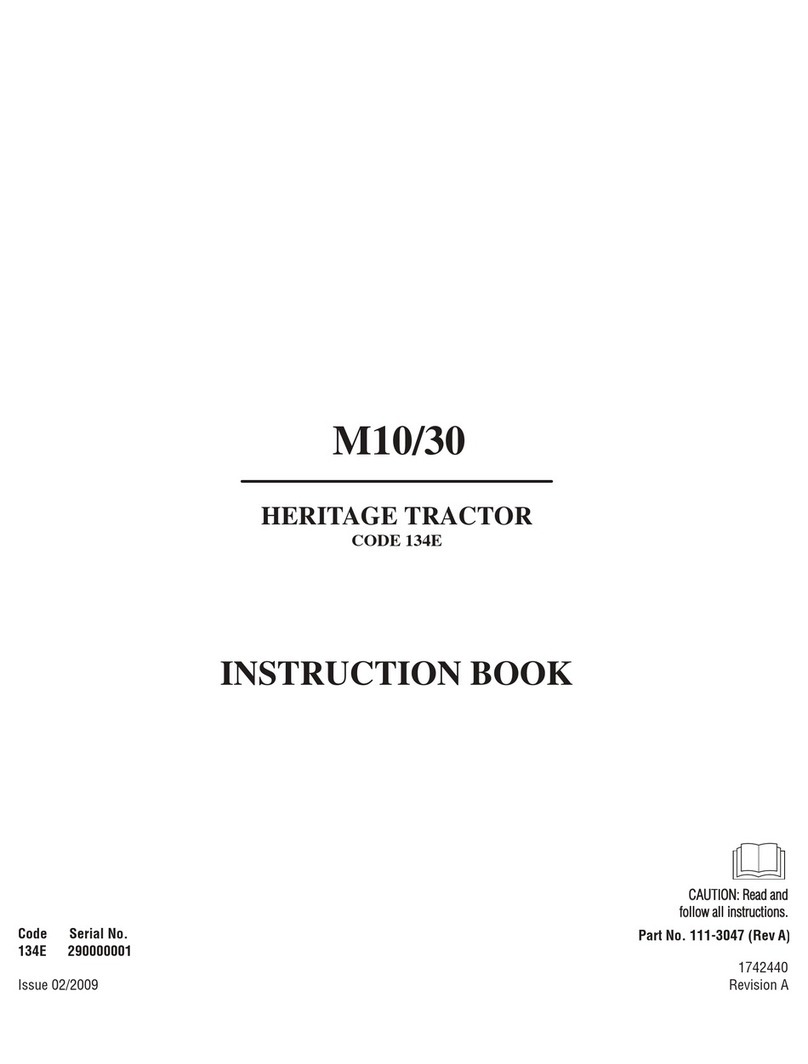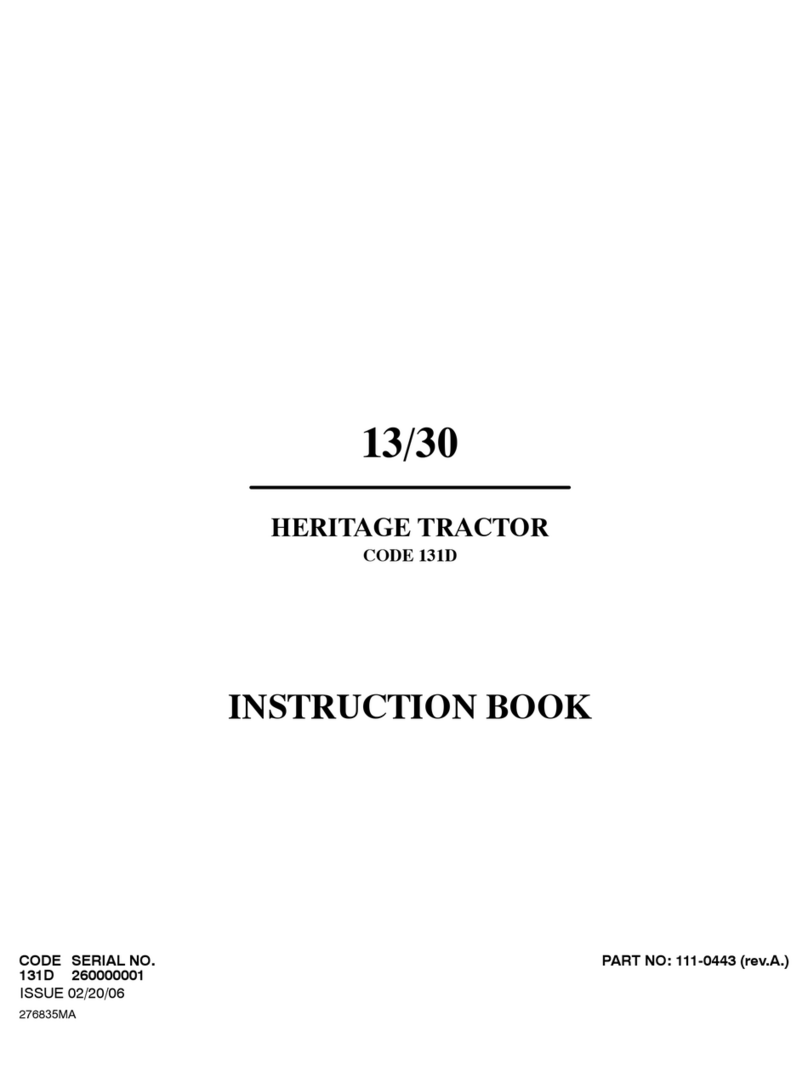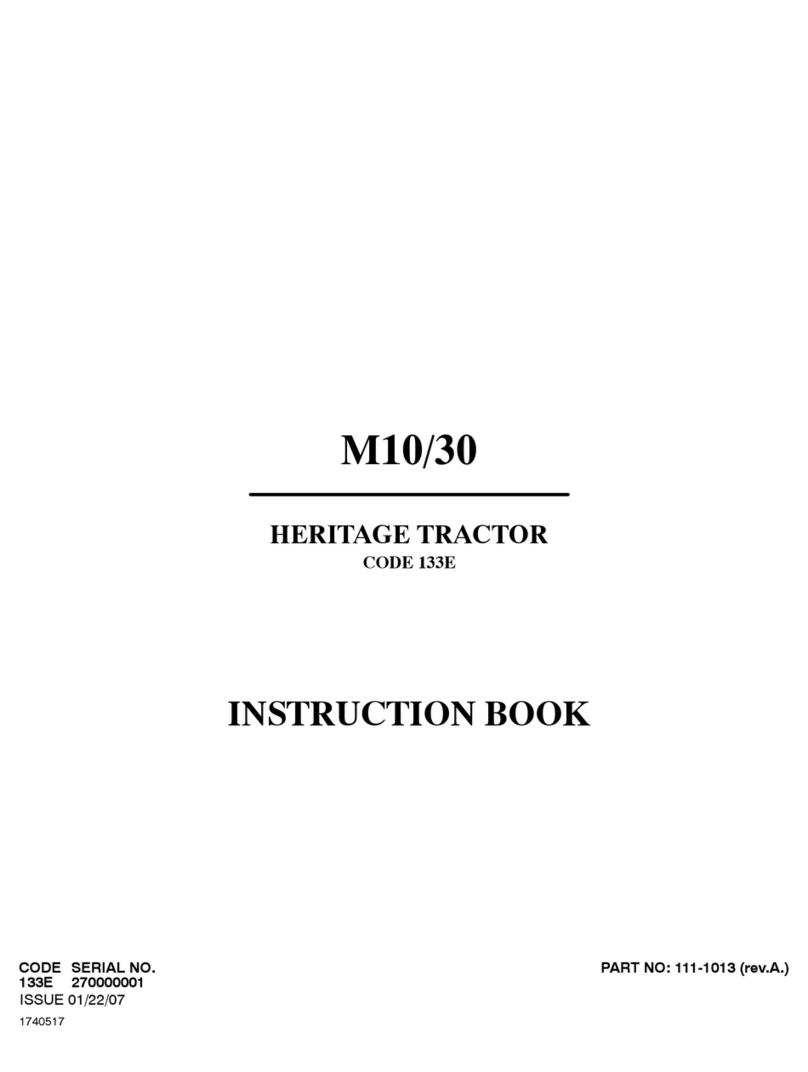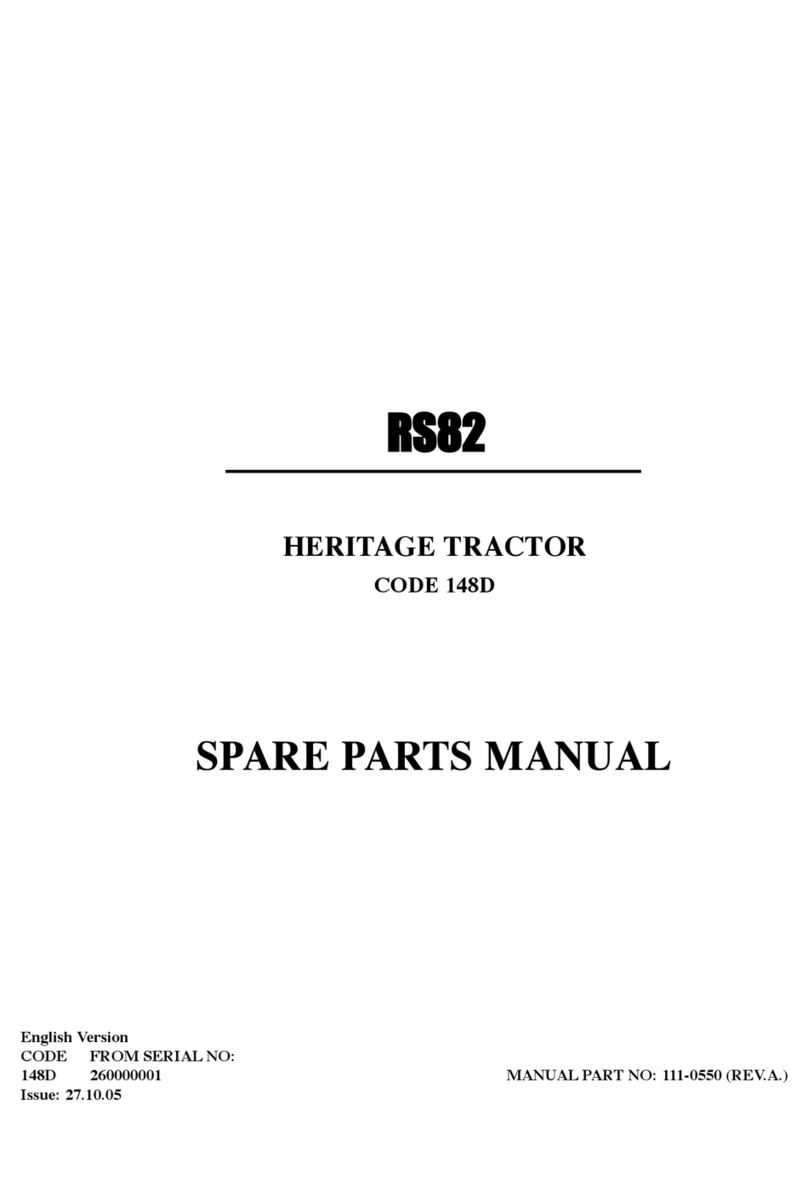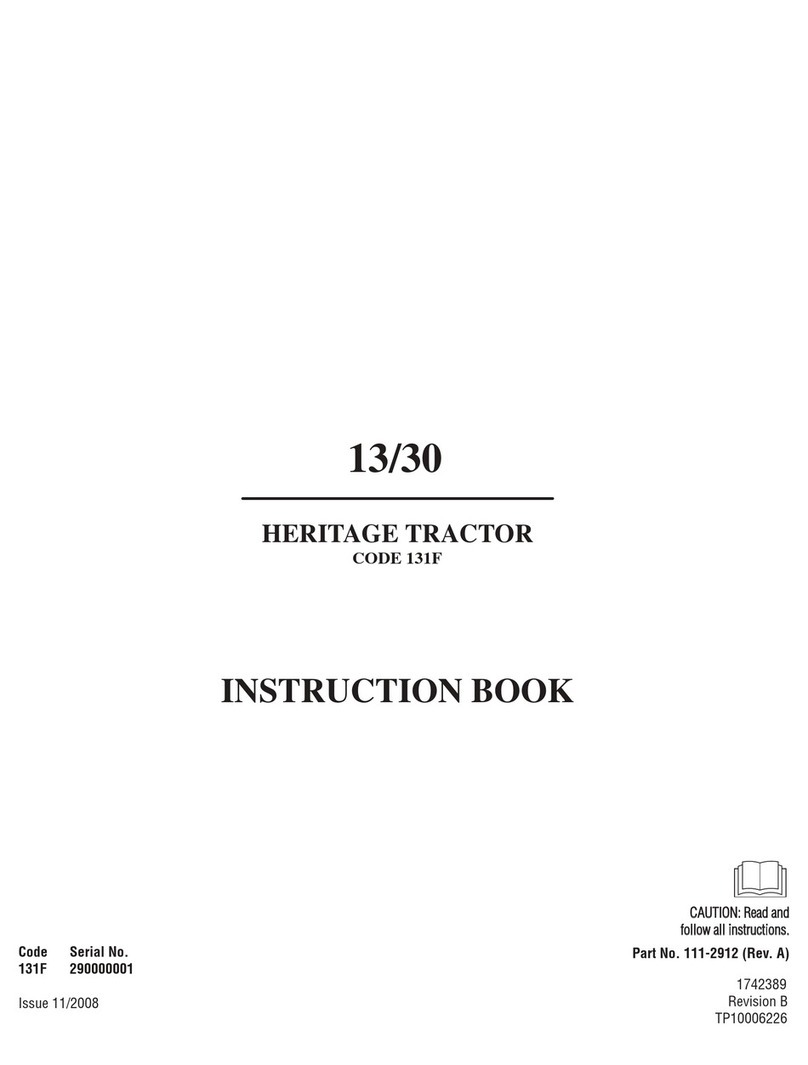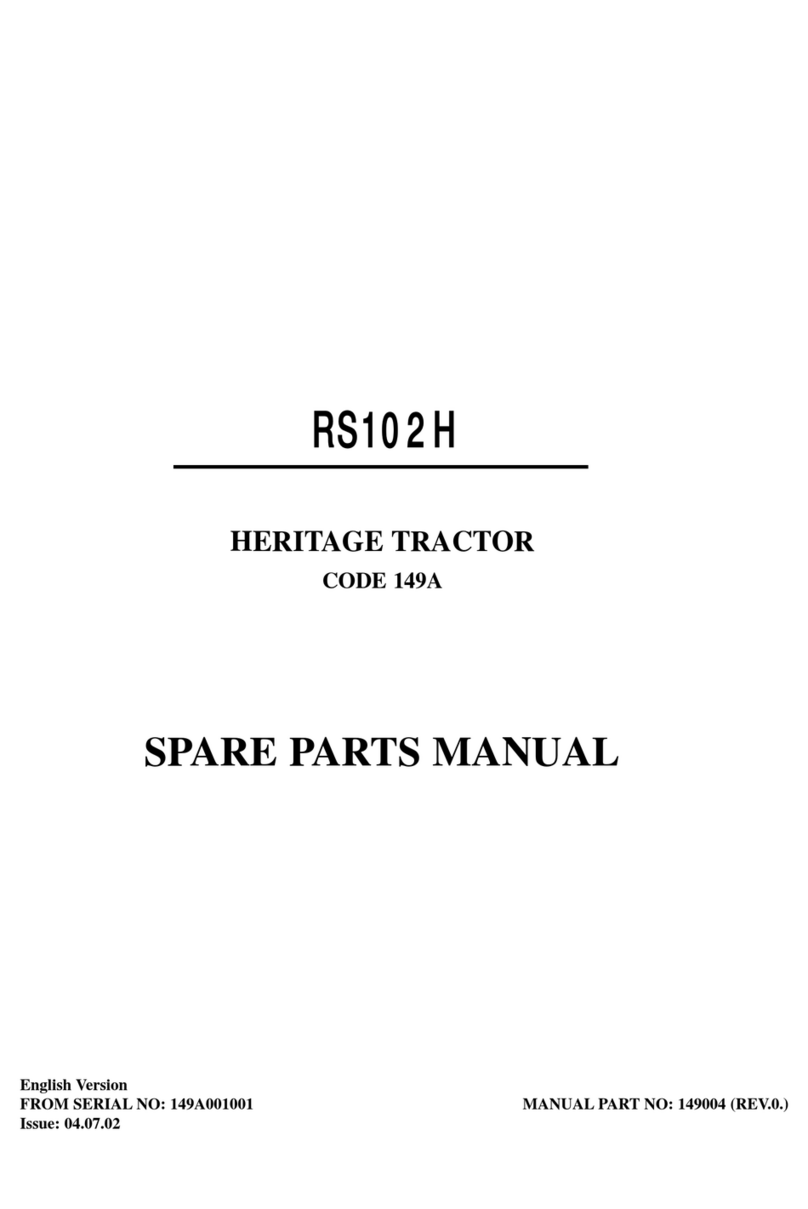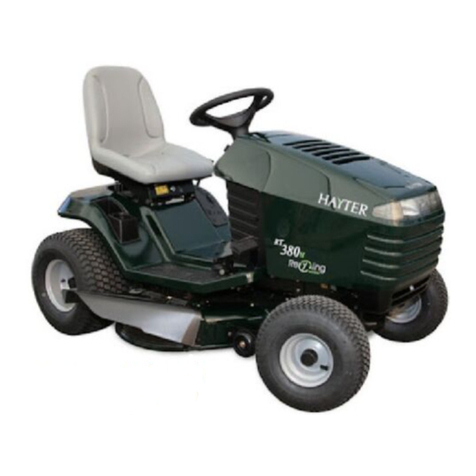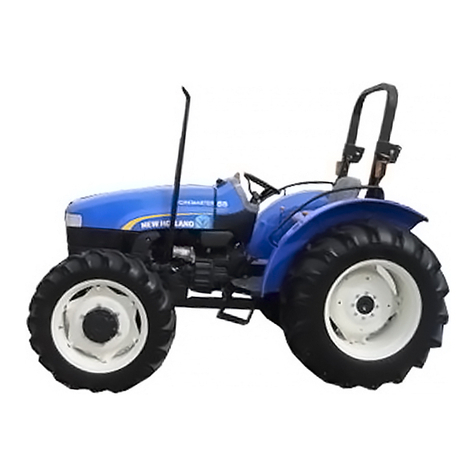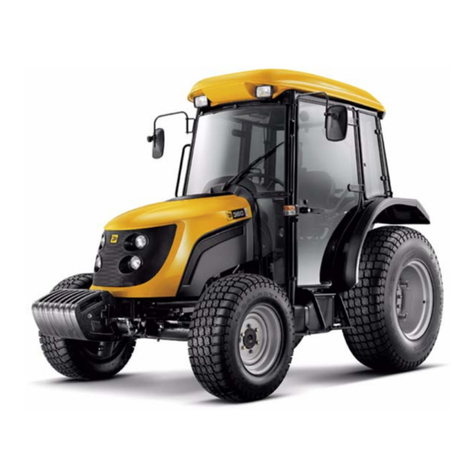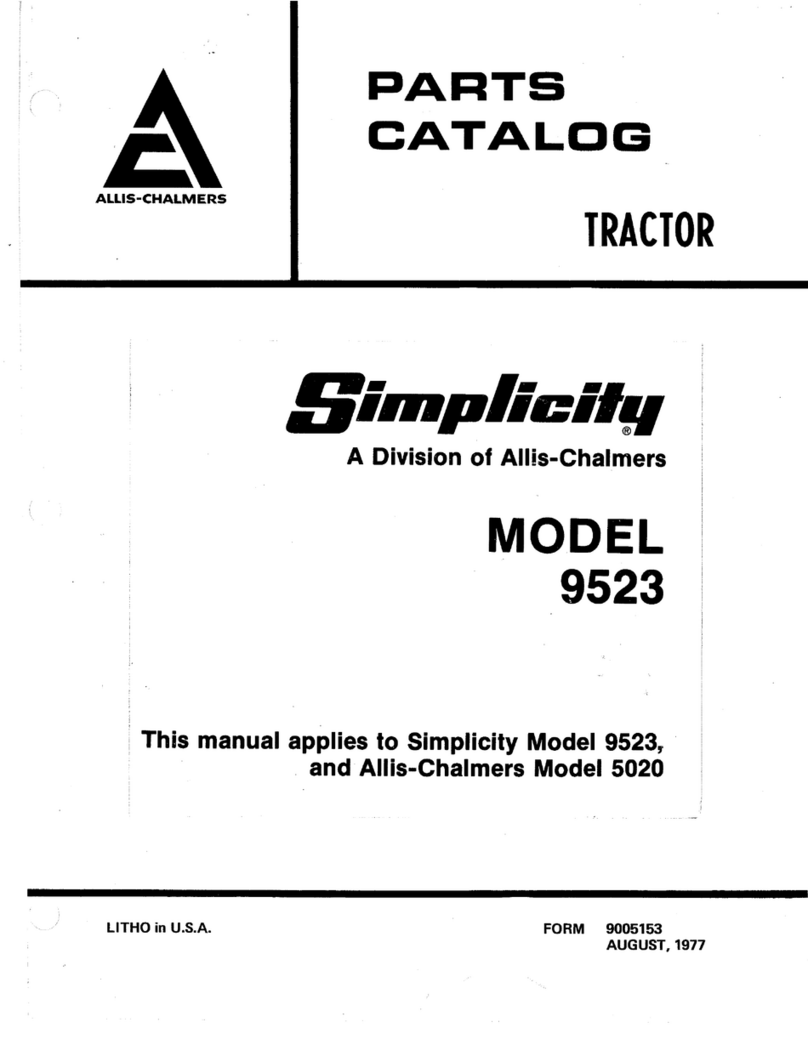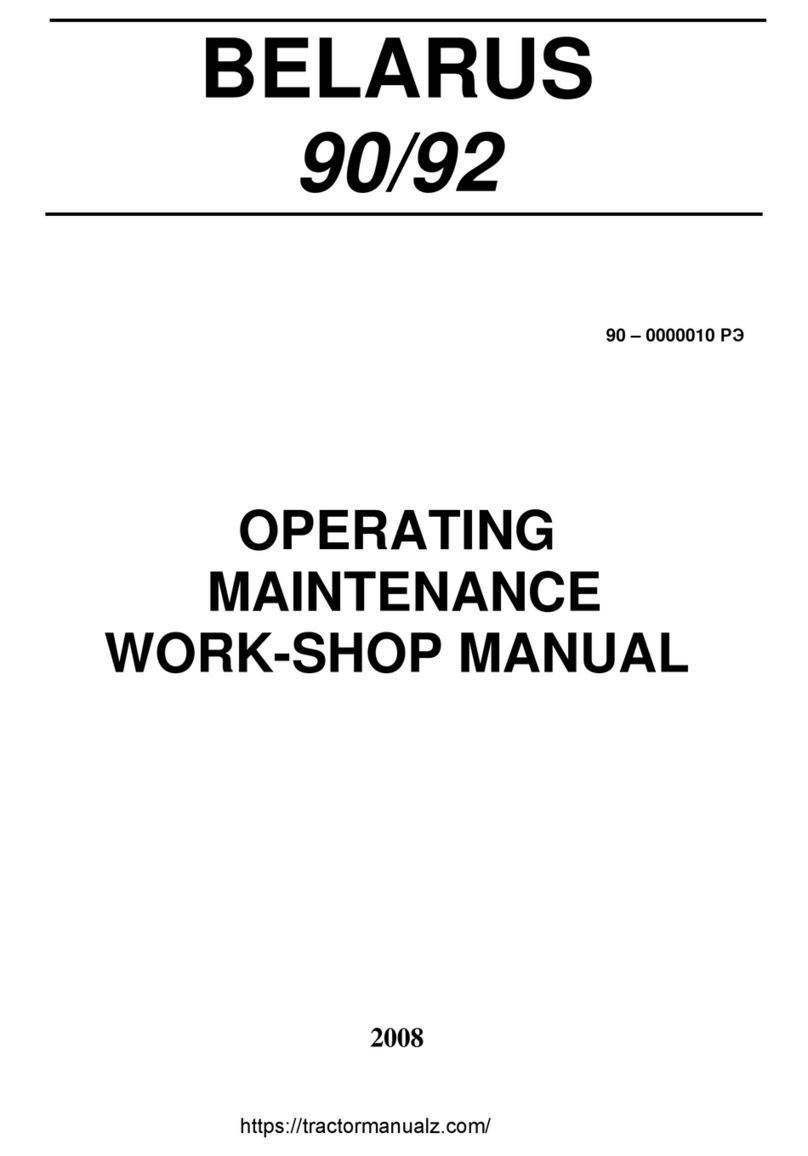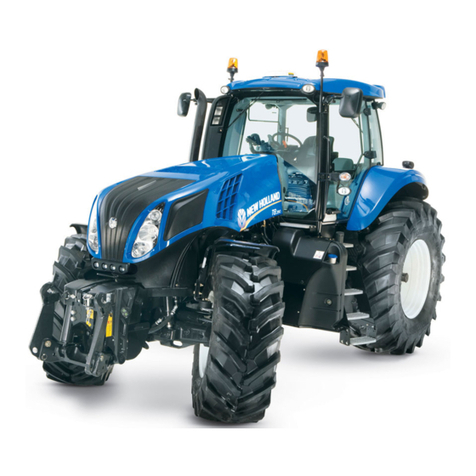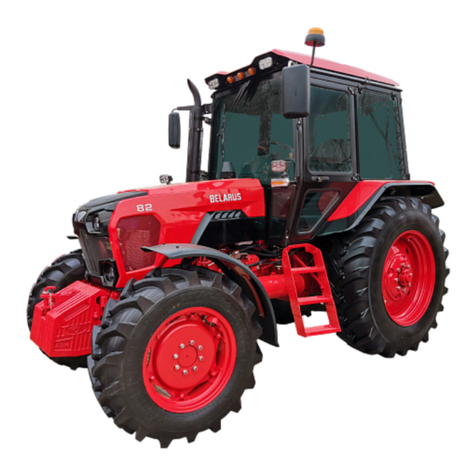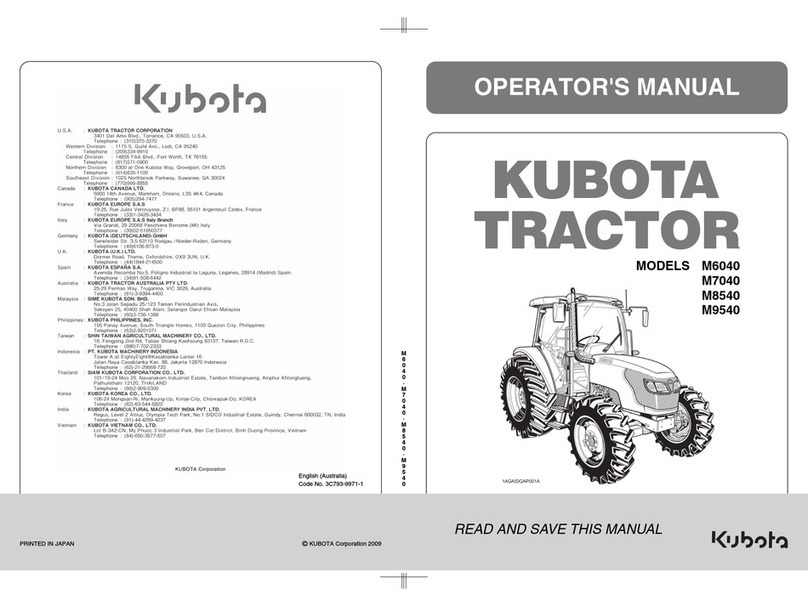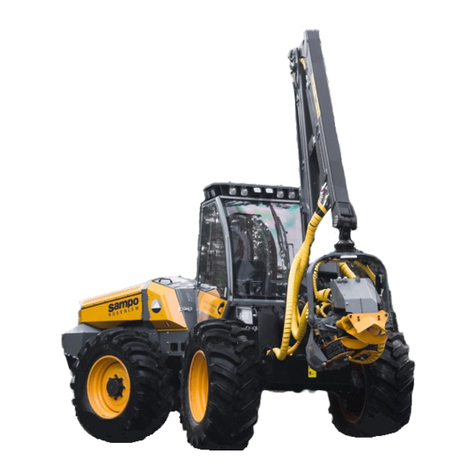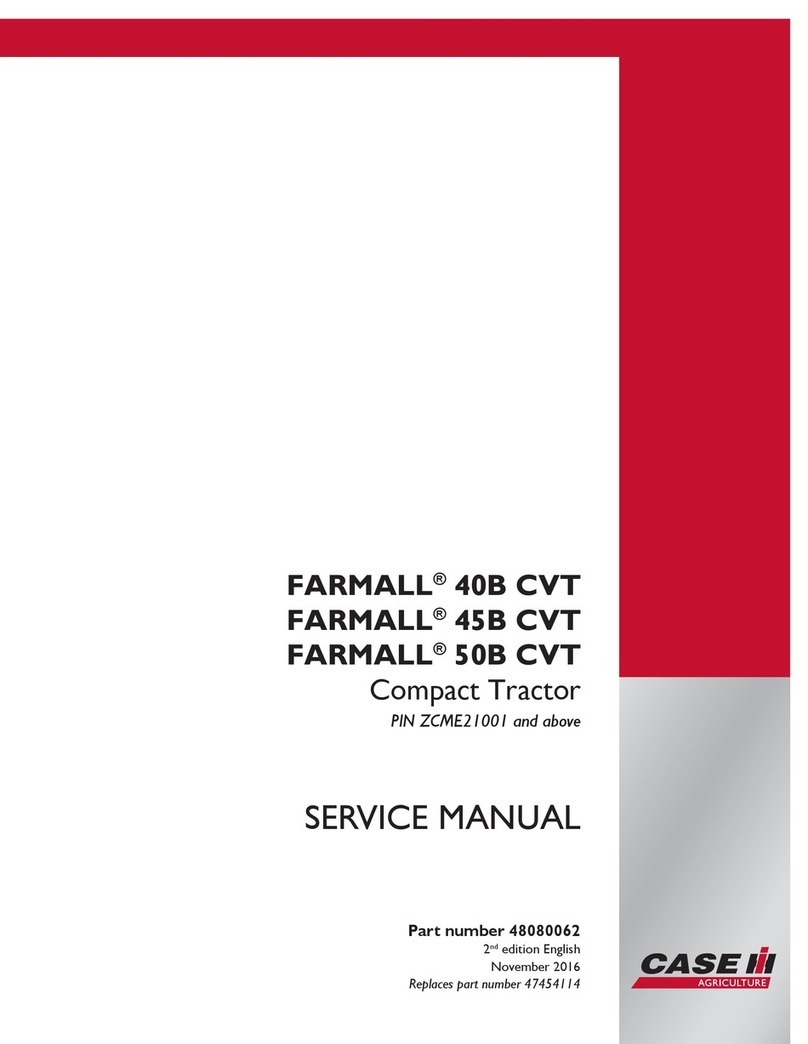Hayter H-Series User manual


CERTIFICATE
OF
CONFORMITY
EC
Declaration
of
Conformity
I,
the
undersigned
R.
Kilminsler
of
Countax
Limited,
Gl
Haseley,
Oxon.
England
certify
that
lawnmowers;-
HI538
HI842
Model
Hayfer
at
2800rpin
Gross
Power
(Kv/)
Max
rotation
of
blades
(rpm)
Engine
manufacturer
Engine
type
Mass
in
Kg
Max
drawbar
pull
(Kg)
at
coupling
hook
Max
vertical
load
(Kg)
Max
sound
power
level
Vibration
(m/s/s)
hands;
Vibration
(m/s/s)
seat:
Type
of
cutting
device
Width
of
cutting
device
(cms)
9.83
12.30
-3000-
“Kohler-
—single
cyl
petrol-
244
255
500
500
-25—
100
Db(A)
@2900rpm100
Db(A}
«2900rpm
7.6
4.2
2.6
1.8
-culterbar-
97
107
Conforms
to
the
specifications
of
Directive
84/638/EEC
(as
adapted
to
technical
progress
by
Directive
87/252/EEC
and
amended
by
Directive
88/180/EEC)
and
Directive
88/392/EEC
(amended
by
91/368/EEC.
93/44/EEC
and
93/68/EEC)
and
Directive
89/336/EEC
(amended
by
91/263/EEC
and
92/31/EEC).
Standards
used
BS5107.
EN292.
IS03767.
IS03789.
IS03864.
Tested
at
Oxford,
England.
I
declare
that
on
behalf
of
Countax
Limited
that
these
machines
conform
to
EC
Essential
Health
and
Safely
Requirements.
Signed
R.
Kilminster
(Technical
Director)
1/1/96
h'tANDATORY
SAFETY
iNSTRlJCTIONS
FOR
THE
OPERATION
OF
TRACTOR
OR
RIDER
MOWERS
^TRAINING
-
1.
Read
the
instructions
carefully.
Be
familiar
with
the
controls
and
the
use
of
the
equipment
2.
Never
allow
children
or
people
unfamiliar
with
these
instructions
to
use
the
mower.
3.
Never
mow
while
people,
especially
children,
or
pets
are
nearby.
4.
The
operator
or
user
is
responsible
for
accidents
or
hazards
occurring
to
other
people
or
their
property.
5.
Do
not
carry
passengers.
6.
All
drivers
should
seek
to
obtain
professional
and
practical
instructions.
Such
instruction
should
emphasise:
•
The
need
for
care
and
concentration
when
working
with
this
machine.
•
Control
of
a
tractor
sliding
on
a
slope
will
not
be
regained
by
the
application
of
the
brake.
The
main
reasons
for
toss
of
control
are:
•
Insufficient
wheel
grip
•
Driving
too
fast
•
Inadequate
braking
•
Incorrect
load
distribution
Contents
Summary:
Safely
tnstrucUons
~
Pages
2
and
3
Controls
and
Indicators
(Dashboard)
-
Page
4
Control
Levers
-
Pages
5
and
6
Starting
and
Using
-
Page
7
Powered
Collector
-
Page
8
Care
and
Maintenance
Including:
-
Pages
5
to
30
Engine,
Oil
and
Fuel,
Air
&
Cooling
~
Pages
11
to
13
Transmission/Diive
Train
-
Page
14
Engine,
Electrics
~
Pages
15
-16
Cutter,
Cutter
Belts
-
Pages
19-24
Collector
-
Pages
25
*
27
Tyres
~
Pages
28
&
29
Routine
Lubrication
-
Page
30
Specification
Summary
-
Back
Cover
READ
THE
INSTRUCTION
MANUAL
BEFORE
USING
THE
GARDEN
TRACTOR
AND
ENSURE
THE
OPERATORS
STUDY
IT
FOR
THEIR
OWN
SAFETY.
THE
FOLLOWING
PRECAUTIONS
ARE
OUTLINED
TO
HELP
PREVENT
ACCIDENTS.
A
CAREFUL
OPERATOR
WHO
USES
COMMON
SENSE
IS
THE
SAFEST
OPERATOR.
THESE
SAFETY
PRECAUTIONS
ARE
IN
ADDITION
TO
THOSE
IN
THE
INSTRUCTION
MANUAL.
^
CAUTION:
^
*THIS
SYMBOL
MEANS
BE
ALERT*
PREPARATION-
1.
Check
that
the
machine
complies
with
ail
applicable
regulations,
including
those
in
force
when
used
on
the
public
highway.
2.
When
mowing
always
wear
substantial
footwear
and
long
trousers.
Do
not
operate
when
barefoot
or
with
open
sandals.
3.
Thoroughly
inspect
the
area
where
the
equipment
is
to
be
used
and
remove
all
stones,
sticks,
wires,
bones
and
any
other
foreign
objects.
4.
Warning
-
petrol
is
highly
flammable:
•
Store
fuel
in
containers
specifically
designed
for
this
purpose.
•
Refuel
outdoors
only
and
do
not
smoke
while
refuelling.
•
Add
fuel
before
starting
the
engine.
Never
remove
the
cap
from
the
fuel
tank
or
add
petrol
while
engine
is
running
or
when
engine
hot,
•
If
petrol
is
spilled,
do
not
attempt
to
start
the
engine
but
move
the
machine
away
from
the
area
of
the
spillage
and
avoid
creating
any
source
of
ignition
until
petrol
vapours
have
dissipated.
2

*
Replace
the
fuel
tank
cap
securely.
5.
Replace
faulty
silencers.
6.
Before
using,
always
inspect
to
see
that
the
blades,
bolts
and
.cutter
assembly
are
not
worn
or
damaged.
7.
Check
the
condition
of
the
tyres
and
ensure
that
they
are
inflated
to
the
correct
pressures
(refer
to
the
specifications).
This
is
particularly
important
if
the
machine
is
to
be
taken
on
the
public
highway.
8.
Check
that
the
mower
is
in
good
working
order,
paying
particular
attention
to
brake
and
steering.
9.
Check
that
all
linkages,
connections
and
pivot
nuts
are
secure
and
that
the
wheel
nuts
are
torqued
correctly.
A
OPERATION
1.
Do
not
operate
the
engine
in
a
confined
space
where
dangerous
fumes
can
collect.
2.
Mow
only
in
daylight
or
in
good
artificial
light.
3.
Before
starling
the
engine,
disengage
blade
and
attachment
drives
and
shift
into
neutral.
4.
Take
care
on
slopes
of
more
than
10
degrees.
6.
R
emember
there
is
no
such
thing
as
a
"safe”
slope.
Travel
on
grass
slopes
requires
particular
care
to
guard
against
overturning:
•
Do
not
stop
or
start
suddenly
when
going
up
or
downhill.
•
Engage
clutch
slowly.
Always
keep
machine
in
gear,
especially
when
travelling
dov/nhill.
•
Machine
speed
should
be
kept
low
on
slopes
and
in
light
turns
•
Slay
alert
for
humps
and
hollov/s
and
other
hidden
hazards.
•
Avoid
mov/ing
across
the
face
of
the
slope.
6.
Watch
out
for
traffic
when
crossing
or
near
roadways.
7.
Stop
the
blades
rotating
before
crossing
surfaces
other
than
grass.
8.
When
using
the
machine,
never
direct
discharge
of
material
toward
bystanders
or
allow
anyone
near
the
machine
while
in
operation.
9.
Never
operate
the
mower
with
defective
guards,
shields
or
without
safety
protective
devices
in
place
and
in
good
working
order.
10.
Do
not
change
governor
settings
to
increase
the
revs
of
the
engine.
Operating
an
engine
at
excessive
speed
increases
the
hazard
of
injury.
11.
Before
leaving
the
operator’s
position;
•
Disengage
the
drive
to
the
cutter
blades
and
attachments
and
lower
the
attachments.
•
Change
to
neutral
and
set
the
parking
brake.
•
Stop
the
engine
and
remove
the
ignition
key.
12.
Disengage
drive
to
attachments,
stop
the
engine
and
disconnect
the
spark
plug
lead
or
remove
ignition
key
before:
•
cleaning
blockages.
•
checking,
cleaning
or
working
on
the
mower.
•
refuelling.
•
removing
the
grass
catcher.
•
After
striking
a
foreign
object.
(Inspect
the
mower
for
damage
and
make
repairs
before
restarting
the
tractor.)
•
if
the
machine
starts
to
vibrate
abnormally
check
immediately
and
call
dealer
if
necessary.
13.
Disengage
drive
to
attachments
when
transporting
or
not
in
use.
14.
Reduce
the
throttle
setting
during
engine
run¬
out.
15.
Never
work
on
the
mower
when
the
engine
is
running.
A
MAINTENANCE
AND
STORAGE
~
1.
Check
that
ail
nuts,
bolts,
and
screws
are
tight
to
be
sure
the
equipment
is
in
safe
working
condition.
2.
Never
store
the
equipment
with
petrol
in
tank
inside
a
building
where
fumes
may
reach
an
open
flame
or
spark.
3.
Allow
the
engine
to
cool
before
storing
in
any
enclosure.
4.
To
reduce
the
risk
of
fire,
keep
the
engine,
silencer
and
battery
compartment
free
of
grass,
leaves,
petrol
or
excessive
grease.
5.
Check
the
grass
catcher
frequently
for
wear
or
deterioration.
6.
Replace
worn
or
damaged
parts
for
safety.
7.
If
the
tank
has
to
be
drained,
this
should
be
done
outdoors.
8.
Be
careful
during
adjustments
of
the
machine
to
prevent
entrapment
of
the
fingers
between
moving
blades
and
fixed
parts
of
the
machine.
SUPPLEMENTARY
INSTRUCTIONS
FOR
USE
OF
HAYTERHSERIES
TRACTOR
1.
Use
good
sense
at
all
times
and,
to
ensure
this
tractor
is
safe
and
serviceable,
fit
only
original
manufacturers’
supplied
spares.
2.
When
inspecting
the
area
to
be
cut
note
also
the
position
of
any
stumps,
manhole
covers,
bumps
and
depressions
and
avoid
them
to
prevent
damaging
the
blade.
3.
We
recommend
the
use
of
standard
UNLEADED
fuel
and
that
you
ensure
the
fuel
tank
Is
full
before
you
start
the
machine.
4.
Always
disconnect
both
battery
terminals
before
attempting
any
work
in
the
engine
compartment.
5.
Do
not
leave
the
tractor
unattended
and
running.
6.
Do
not
put
hands
near
moving
belts
or
the
Power
Take-Off
pulley
while
it
is
rotating.
3

throttle
CUTTER
ON/OFF
SWITCH
The
lever
is
pushed
toward
and
up
for
Fast
and
Choke,
back
and
down
for
Slow.
A
cold
engine
is
started
on
the
choke
setting,
a
warm
one
on
the
fast
setting.
The
Choke
setting
should
be
cancelled
as
soon
as
possible
and
the
engine
operated
on
FAST
setting
at
all
times.
CHOKE
An
independent
choke
is
fitted
to
the
H1842
models.
This
choke
should
be
used
in
combination
with
a
fast
throttle
setting
to
start
a
cold
engine
-
cancel
as
soon
as
possible.
Do
not
use
choke
on
warm
engine.
IGNITION
The
key
start
controls
botit
ignition
and
the
starter.
Insert
the
key
and
turn
to
the
1st
position,
the
dashlights
will
come
on
{check
that
all
is
ready
to
start)
then
turn
further
to
activate
the
starter.
Release
when
engine
starts.
To
stop,
turn
the
key
to
the
left
(having
first
switched
off
both
cutter
and
PTO)
(T
IS
ALWAYS
GOOD
PRACTICE
TO
REMOVE
THE
KEY
AND
KEEP
IT
SAFELY.
As
with
a
car,
it
is
important
to
prevent
unauthorised
use
by
children,
who
could
injure
themselves.
The
cutter
switch
controls
the
electro¬
magnetic
blade
clutch,
it
works
like
a
light
switch
(but
in
reverse)
-
UP
for
ON
and
DOWN
for
OFF.
Although
it
always
returns
to
the
central
position
and
the
cutter
deck
will
automatically
be
turned
off
v^fhen
the
engine
is
switched
off,
it
is
not
good
practice
to
rely
on
this.
The
cutter
deck
should
always
be
sv^ritched
OFF
as
soon
as
you
have
finished
cutting
and
certainly
BEFORE
stopping
the
engine
or
getting
off
the
tractor.
HEADLIGHTS
SWITCH
The
headlights
are
turned
ON
by
switching
the
rocker
switch
down.
The
headlights
will
not
operate
when
the
ignition
is
off.
Turn
the
headlights
OFF
before
starting
or
stopping.
A.
‘Cutter
On’
indicator
-
flashes
con¬
tinuously
when
cutter
is
running.
B.
The
‘Ignition
On'
indicator
-
goes
out
vdien
the
cutter
is
running.
C.
The
‘Charge’
indicator
-
comes
on
only
vi'hen
the
battery
is
charged.
(If
this
indicator
is
not
lit
by
the
end
of
a
mowing
session
you
should
remove
the
battery
for
charging)
D.
The
‘Brake
OrV
indicator.
SEAT
SAFETY
SWITCH
Your
Hayter
H-Series
Tractor
is
fitted
with
a
svv'itch
that
will
turn
OFF
the
engine
and
the
cutter
deck
should
you
dismount.
This
is
a
safety
back¬
up
and
should
not
be
used
voluntarily.
If
you
v»rant
to
dismount
from
the
tractor,
and
want
the
engine
to
continue
running,
first
switch
OFF
the
cutter
deck,
then
apply
the
Parking
Brake.
You
can
now
dismount,
but
DO
NOT
LEAVE
THE
TRACTOR
STANDING
WITH
ENGINE
IDLING
FOR
ANY
LENGTH
OF
TIME.
Should
you
try
to
dismount
with
the
parking
brake
ON
and
the
cutter
deck
ON,
the
cutter
deck
will
cut
out
after
a
short
delay
of
a
couple
of
seconds.
DO
NOT
RELY
ON
THIS
BACK-UP
CUT¬
OUT.
ENSURE
SAFETY
BY
SWITCHING
THE
CUTTER
OFF.
BRAKE
PEDAL
SAFETY
SWITCH
Your
Hayter
H-Series
Tractor
is
fitted
with
a
safety
switch
under
the
brake/ciutch
pedal.
This
switch
‘earths’
the
ignition
unless
the
brake
is
on.
The
engine
will
only
start
while
the
brake/clutch
is
depressed.
Two
red
lights
on
the
dash
(Ignition
-
second
right
and
Brake
-
far
right)
indicate
that
the
engine
is
ready
to
start.
4

HYDROSTATIC
SPEED
CONTROL
BYPASS
LEVER/DUMP
VALVE
The
lever
to
the
right
of
the
driver’s
seat
is
an
infinitely
variable
speed
control
on
the
hydrostatic
drive
tractor.
Select
NEUTRAL,
ensure
the
brake
pedal
is
depressed
and
the
cutter
turned
off
before
starting
the
Tractor.
When
the
engine
is
started
release
the
brake
and
move
the
lever
forv^fard
to
go
faster.
Pull
it
back
to
slow
down.
Return
it
to
neutral
to
stop.
The
foot
pedal
operating
the
clutch/brake
should
be
used
only
for
emergency
stops
and
for
applying
the
parking
brake.
Normal
stopping
on
level
ground
can
be
achieved
using
the
speed
control
lever.
To
select
reverse
-
start
from
neutral
and
move
the
lever
left
and
back.
TO
MAINTAIN
BLADE
SPEED
AND
OPTIMUM
CUTTING
EFFICIENCY,
THE
THROTTLE
CONTROL
LEVER
SHOULD
ALWAYS
BE
SET
AT
‘FAST’
WHEN
DRIVING
AND
CUTTING
WITH
YOUR
TRACTOR.
USE
THE
SPEED
CONTROL
LEVER
OR
GEAR
CHANGE
TO
VARY
THE
SPEED
OF
YOUR
TRACTOR.
TO
MOVE
THE
TRACTOR
BY
PUSHING
place
the
speed
control
lever
into
neutral
and,
if
fitted,
operate
the
nydrostatic
bypass
lever
(dump
valve).
This
can
be
found
alongside
the
rear
right
wheel
of
the
Tractor.
The
bypass
lever
should
only
be
engaged
if
the
Tractor
is
stationary
and
standing
on
level
ground.
Pull
the
V
shaped
lever
and
turn
it
to
the
left
so
it
engages
within
the
retaining
slot.
With
this
lever
engaged
the
Tractor
can
be
pushed
for
short
distances
and
at
a
speed
not
exceeding
2mph.
WARNING
-
with
the
bypass
lever
engaged
there
will
be
a
loss
of
hydrostatic
braking
capacityl
The
bypass
lever/dump
valve
is
found
alongside
the
rear
left
wheel
SELECT
MEDIUM
TO
SLOW
SPEEDS
WHEN
CUTTING
GRASS
-
Driving
too
fast
reduces
the
power
and
therefore
the
efficiency
of
the
grass
cutter.
Always
maintain
a
sensible
speed
to
ensure
a
good
finish
on
your
lawn.
REMEMBER
TO
DISENGAGE
THE
VALVE
BY
MOVING
THE
V
SHAPED
LEVER
TO
THE
LEFT
AND
RETURNING
IT
TO
THE
FRONT
BEFORE
STARTING
THE
ENGINE
AND
ATTEMPTING
TO
MOVE
OFF!
5

BRAKE/CLUTCH
PEDAL
This
pedal
controls
both
the
clutch
and
the
brake
and
operates
in
two
stages;
the
first
and
upper
part
of
the
travel
is
the
clutch,
the
second
and
lower
part
is
the
brake.
A
safety
switch
(see
Page
5)
under
the
brake
will
not
permit
the
engine
to
start
UNLESS
THE
BRAKE
IS
APPLIED.
PARKING
BRAKE
To
apply
the
Parking
Brake,
this
knob
should
be
pressed
down
and
held
while
the
Brake/Ciutch
pedal
is
fully
depressed
and
released.
The
Parking
Brake
will
lock
the
foot
pedal
in
the
ON
(down)
position.
The
Parking
Brake
is
released
by
depressing
the
brake/clutch
pedal.
CUTTER
HEIGHT
LEVER
This
lever
is
used
to
select
the
cutting
height
-
down
for
LOW,
up
for
HIGH
(from
about
13mm
to
about
90mm).
A
HIGH
position
(5
or
6)
should
be
selected
before
turning
on
the
'Cutter
Engage’
Switch.
Make
sure
that
no-one
is
standing
near
(see
instructions
on
Page
3).
The
six
cutting
heights
are
numbered.
We
suggest
you
select
position
2
or
3
for
mowing
lawns
and
position
4
or
5
for
long
grass
and
paddocks.
In
practice
you
will
discover
the
height
you
need
for
each
area.
In
wet
or
heavy
conditions
it
is
advisable
to
select
a
higher
position
than
you
would
in
light
or
dry
conditions.
It
is
always
a
good
Idea
to
switch
the
cutter
deck
OFF
and
raise
the
Cutting
Height
Lever
to
the
highest
position
before
driving
the
tractor
from
one
part
of
your
grounds
to
another
-
this
will
limit
the
possibility
of
damage
to
the
deck
that
could
result
from
hitting
an
obstacle
at
speed.
POWER-TAKE-OFF
(P.T.O.)
Push
the
lever
DOWN
and
to
the
left,
letting
it
find
its
own
height,
to
engage
the
PTO
and
DOWN
and
to
the
right
to
disengage.
This
is
an
ON/OFF
lever
for
the
powered
collector.
Always
have
this
lever
in
the
DISENGAGED
POSITION
when
you
are
not
collecting.
Do
not
put
hands
near
moving
pulleys
and
belts.
SEAT
ADJUSTMENT
The
seat
can
be
adjusted
forward
to
suit
your
driving
position.
Simply
pull
the
lever
up
and
slide
backwards
until
the
desired
position
is
achieved.
Seat
adjustment
lever
6

1.
Get
on
your
tractor
and
make
sure
you
are
comfortable
and
can
reach
all
the
controls.
Ensure
that
the
RT.O.
is
disengaged
and
that
the
parking
brake
is
engaged.
SELECT
NEUTRAL
2
.
ADJUST
THROTTLE
CONTROL
TO
FAST/CHOKE
position
for
a
cold
engine
or
an
Intermediate
position
if
warm.
(The
H1842
model
has
a
separate
choke).
3
.
Insert
key
and
TURN
IGNITION
TO
THE
RIGHT
(first
position).
The
Ignition
and
Brake
indicator
lights
on
the
dash
will
illuminate
showing
the
tractor
is
ready
to
start
-
if
the
lights
do
not
illuminate
ensure
that
the
brake
is
applied
(there
is
a
safety
cut-out
on
the
brake),
4
.
TURN
IGNITION
FURTHER
to
operate
the
starter
motor.
If
the
engine
does
not
start
first
time,
REPEAT
5
CANCEL
‘CHOKE’
AND
SELECT
FAST
SETTING
when
the
engine
is
running
well.
6
before
you
move
off
RAISE
THE
CUTTER
TO
THE
HIGHEST
POSITION
-
this
will
minimise
the
chances
of
damage
whilst
moving
to
the
area
to
be
cut.
7.
D
E
P
R
E
SS
CLUTCH/BRAKE
TO
CANCEL
HANDBRAKE.
8.
HYDROSTATIC
MODEL
Whilst
still
in
neutral,
release
the
park-brake
by
pressing
down
the
clutch/brake
pedal.
Then
move
off
by
advancing
the
hydrostatic
speed
control.
9
.
When
you
have
reached
the
area
to
be
cut,
make
sure
the
cutter
is
in
the
raised
position
and
nobody
is
near
the
tractor,
then
PUSH
THE
CUTTER
SWITCH
UP
briefly
-
you
will
hear
the
cutters
engaging.
10.
SELECT
CUTTING
HEIGHT
-
Second
or
third
lowest
for
dry
lawns,
higher
for
wet
or
long
grass.
Cut
at
slow
or
medium
speed
settings
on
the
hydrostatic
speed
control.
11.
TO
STOP
CUTTING,
RAISE
CUTTER
DECK
TO
A
HIGH
POSITION
and
TURN
THE
CUTTER
SWITCH
OFF
(DOWN).
12.
To
park,
first
select
a
level
area
-
then
stop
by
returning
the
speed
control
lever
to
neutral;
then
apply
the
parking
brake.
AVOID
STOPPING
ON
SLOPES.
13
.
ADJUST
THROTTLE
SETTING
TO
LOW,
ensure
that
the
cutters
and
Power-Take-Off
are
switched
off
AND
THEN
TURN
OFF
THE
IGNITION.
Remove
the
key
to
prevent
unauthorised
use
-
particularly
by
children.
LAYING
UP
YOMR
TRACTOR,FOB
THE
WINTER
Your
tractor
should
be
serviced
annually
by
your
dealer
-
book
it
early
to
beat
the
last
minute
rush.
1.
Ensure
that
the
last
fill
of
your
petrol
tank
is
clean
fresh
.unleaded
fuel.
2.
Having
run
the
engine
with
the
neW
fuel
either
iri
use
or
iferatle^^^
minutes,
disconnect
the
battery,
making
sure
the
terminal
leads
are
removed
and
theh:DRAIN
THE
FUEL
TANK.
.
7
^;
:g..Beconnect.ithebattery:iandls|ip^^^||J|(j^J^^^^J||jp|||lij^
4.
WASH
YOUR
TRACTOR,
takinig;partipuidr;^re
the
cutter
deck
and
6
.
Lubricate
theTractor
and
treat
metal
paiits
w^
antl^brmsibn
p^bductV^
I
7

CONNECTION
To
connect
the
Powered
Collector
to
the
H-Series
tractor,
ensure
that
both
are
on
an
even
surface
with
the
Locking
Levers
(1)
on
the
collector
facing
the
Trailing
Arms
(2)
on
the
tractor.
Move
the
collector
manually
to
the
tractor.
Lower
the
Trailing
Arms
using
the
lever
(9)
to
the
left
of
the
seat.
At
the
end
of
each
Trailing
Arm
you
will
find
a
Locating
Lug
(4).
Slide
the
Channels
(5)
on
either
side
of
the
Powered
Collector
over
the
Lugs
but
do
not
engage
the
Locating
Lever
(1)
yet.
INSTALLING
THE
DRIVE
BELT
(Part
No.
C22-8734>00)
is
best
achieved
with
the
grass
box
detached.
Place
the
Drive
Belt
over
the
PTO
pulley
(beneath
the
tractor
seat).
Standing
behind
and
facing
the
tractor,
lean
over
the
collector
and
extend
the
belt
with
both
hands
parallel
to
the
ground.
Now
twist
the
belt
to
form
a
figure
‘8’
-
the
right-hand
up
and
the
left-hand
down.
In
this
position
place
the
other
end
of
the
belt
over
the
Powered
Collector
Pulley
(7).
Be
sure
that
this
is
installed
the
right
way
round
otherwise
the
brush
will
work
in
reverse
and
collection
will
be
poor!
Engage
the
Locating
Levers
(1)
over
the
Locating
Lugs
(4)
and
finally
insert
the
Securing
Pins
(6)
To
disconnect,
reverse
this
procedure.
PTO
DRIVE
BELT
TENSION
Engaging
the
Locating
Levers
tensions
the
belt
which
should
not
be
run
too
tight
-
to
check
the
tension
there
should
be
a
19mm
deflection
with
light
finger
pressure
(2Kgs)
at
a
midway
point
between
PTO
pulley
and
Sweeper
pulley
(7).
If
tension
needs
adjustment,
disconnect
the
collector
and
the
adjustment
holes
(8)
will
be
found
on
the
inside
of
the
Locating
Channels.
Adjust
by
movement
of
one
lever
at
a
time
by
one
hole
at
a
time,
alternate
sides.
There
should
never
be
more
than
one
hole
difference
from
left
to
right.
If
in
doubt
contact
your
dealer.
TO
USE:
RAISE
SWEEPER
TO
THE
TRANSPORT
POSITION
A
lever
(9)
to
the
driver’s
left-hand
raises
the
Powered
Collector
to
the
transport
position.
We
recommend
that
you
drive
to
and
from
the
area
to
be
swept
with
the
Powered
Collector
in
this
transport
position
and
with
the
P.T.O.
disengaged.
When
you
reach
the
area
to
be
swept,
lower
the
collector
and
then
engage
the
brushes
by
pushing
the
sprung
PTO
lever
to
the
left
to
release
and
engage.
LOWER
THE
COLLECTOR
Using
the
lever
(9),
lower
the
collector.
8
ADJUST
THE
SVv'EEPlNG
HEIGHT
Using
the
Sweeping
Height
Lever
(10)
select
the
position
appropriate
to
the
conditions
and
the
height
of
cut.
TO
GET
THE
BEST
SWEEPING
PERFORMANCE
AND
TO
PRESERVE
THE
BRUSHES
SELECT
THE
HIGHEST
SETTING
THAT
WORKS
-
start
high
and
adjust
down
until
the
brushes
stop
to
collect
(normally
the
middle
adjustment
hole).
DO
NOT
SET
THE
BRUSHES
TOO
LOW
-
this
will
lead
to
scarifying
and
a
very
untidy
finish
as
well
as
shortening
brush
life.
TO
TIP
CUTTINGS
See
illustration
below,
left.
You
can
check
the
contents
of
the
grassbox
through
the
clear
cover
(11).
When
it
is
full,
DISENGAGE
THE
PTO
and
raise
the
collector
to
the
transport
position.
Drive
to
your
tipping
area,
reverse
to
the
pile,
select
neutral,
then
extend
and
pull
the
tipping
handle
(12)
towards
you.
The
cuttings
will
discharge.
If
some
cuttings
are
reluctant
to
come
out
of
the
grassbox,
continue
to
tip
the
grass
box
as
you
drive
forward
from
the
heap.

H
Series
Tractor
Hints
on
use
-
Fault
Finding
-
Simple
Maintenance
Hayter
tractors
leave
the
factory
after
a
thorough
inspection
and
Hayter
dealers
carry
out
a
further
inspection
before
they
deliver
the
tractor
to
you.
All
settings
detailed
in
the
following
pages
are
correct
at
the
time
of
delivery.
Wear,
heavy
use
and
accidental
impact
can
change
settings
and
the
following
pages
tell
you
how
to
carry
out
simple
servicing
and
adjustments
on
the
understanding
that
these
are
carried
out
at
your
risk
and
that
the
consequences
of
incorrect
servicing
and
adjustments
are
not
covered
by
warranty.
If
in
doubt
get
your
dealer
to
carry
it
out.
Annual
servicing
by
your
dealer
remains
a
condition
of
the
Hayter
Two
Year
Limited
Warranty.
tk
ENGINE
Check
list
-
starting
and
running
Page
10
Oil
level
check
Page
10
Oil
change
and
filters
Page
11
Fuel
and
Carburation
Page
12
Air
and
Cooling
Page
13
Transmission
Page
14
Electrical
-
Battery,
Plugs
and
Lights
Page
15
Electrical
^
Fuses
and
PCB
Page
16
Wiring
Diagram
-
Tractor
H1538
Page
17
Wiring
Diagram
-
H1842
Page
18
CUTTER
Check
list
-
cutting
faults
Page
19
Levelling
the
cutter
-
front
to
back
Page
20
Levelling
the
cutter
-
side
to
side
Page
21
Drive
Belt
Tension
Page
22
Deck
Removal
and
Belt
Replacement
Page
23
Integral
Belt
Page
24
COLLECTOR
Check
list
-
collection
faults
Page
25
Drive
Belt
Tension
and
replacement
Page
26
Brush
-
replacement
and
maintenance
Page
27
TYRES
Check
list
Page
28
Removal
of
wheels
Page
29
Puncture
repair
Page
29
LUBRICATION
AND
GREASING
Steering,
Rear
Wheels
and
Cutter
Deck
Page
30
9

To
check
oil
level:
Starting
and
Running
Check
List
Before
you
start
1/
Check
that
the
engine
is
filled
with
the
right
oil
(SAE
10W-30)
and
to
the
recommended
mark
-
never
overfill,
(see
Fig.
3)
2/
Fill
your
petrol
tank
with
fresh
unleaded
premium
petrol
(see
page
12)
If
it
is
more
than
1/3rd
full
of
old
untreated
petrol
that
has
been
in
the
tank
8
weeks
or
more
-drain
and
then
refill.
If
less
than
1/3rd
full
of
old
untreated
fuel,
completely
fill
with
new
premium
unleaded
petrol.
3/
Ensure
the
throttle
is
advanced
to
‘Fast’
and,
if
engine
is
cold,
the
choke
is
engaged.
4/
Ensure
that
the
Park
Brake
is
'on’
or
that
the
brake/clutch
pedal
is
fully
depressed.
Insert
the
key
and
turn
Clockwise
If
dashboard
ignition
lights
fail
to
come
on
-
check
1/
That
the
battery
terminals
are
connected,
(see
page
15
fig
21)
2/
That
the
15amp
fuse
is
properly
located
and
has
not
blown
(see
page
16
fig
25)
3/
That
the
battery
is
charged
If
the
engine
falls
to
turn
over
-
check
1/
That
the
brake
is
depressed
or
parking
brake
on.
If
the
engine
turns
over
and
does
not
start
-
check
1/
That
the
fuel
tank
Is
full.
2/
That
the
spark
plug
lead
is
connected.
3/
That
the
outlet
in
the
fuel
tank
is
not
blocked.
4/
That
the
spark
plug
is
clean
and
set
to
the
right
gap
(see
page15
fig
22).
5/
That
the
fuel
filter
is
not
blocked
(See
page
12
fig
12).
If
the
above
do
not
apply
-
call
your
dealer.
If
the
engine
misfires,
loses
power
or
stalls
In
use
-
check
1/
That
you
have
not
run
out
of
fuel.
2/
That
the
air
filter
pre-cleaner
is
not
blocked
(see
page
13
figs
16
and
17).
3/
That
the
cooling
air
intakes
are
not
blocked
(see
page
13
figs
14
and
15).
4/
That
the
fuel
filter
is
not
blocked.
(See
page
12
fig
12).
5/
If
the
ignition
lights
have
gone
off
check
the
1
Samp
fuse
(see
page
16
fig
25)
IF
THERE
IS
EVIDENCE
THAT
THE
ENGINE
IS
OVERHEATING
OR
IF
YOU
FIND
THE
OIL
CONSUMPTION
IS
HIGH
-
CALL
YOUR
DEALER
WITHOUT
FAIL
Ensure
that
the
tractor
is
on
a
firm
level
surface.
Clean
around
oil
filler.
If
engine
has
been
running
wait
a
few
minutes
after
it
has
been
turned
‘OFF’.
Turn
anti-clockv</ise
to
remove.
Oil
level
should
be
in
the
grey
zone.
If
required,
fill
slowly
then
recheck.
10

OIL
DRAINING
NOTE:
OIL
SHOULD
BE
CHANGED
WITHOUT
FAIL
AFTER
THE
FIRST
5
HOURS
RUNNING.
The
H
Series
Garden
Tractor
has
an
oil
drain
adaptor
(fig
5)
located
on
the
right
hand
(off
side)
of
the
engine.
This
is
like
a
bayonet
light
fitting
which
you
push
in
and
turn
anti
clock
wise
to
release.
A
short
length
of
clear
hose
is
supplied
in
the
tool
kit
that
fits
on
this
adaptor
so
that
waste
oil
can
be
poured
into
a
can
or
bottle.
Before
draining:
1/
Start
up
the
engine
and
allow
to
idle
until
it
is
warm.
(About
five
minutes)
2/
Switch
off
the
engine,
lift
open
the
bonnet,
and
unscrew
the
oil
cap/dipstick.
To
drain:
1/
Locate
the
Oil
drain,
(fig
5)
2/
Remove
yellow
Dust
Cap.
3/
Fit
the
short
length
of
hose
supplied
over
the
nozzle
of
the
adaptor
(See
fig
6)
and
direct
the
other
end
into
a
container
large
enough
to
take
2
litres
of
waste
oil.
4/
Press
the
adaptor
in,
turn
anti-clockwise
and
pull
to
start
flow.
5/
When
the
sump
is
empty
press
in
the
adaptor
and
turn
clockwise
to
lock.
Remove
hose
and
store
for
next
use.
Replace
yellow
Dust
Cap.
6/
Refill
with
recommended
oil
(SAE30
10W-30
detergent
oil
classified
for
service
-
SG,
SF,
SH.)
to
engine
manufacturer’s
instructions.
DO
NOT
OVERFILL.
The
use
of
lubricants
that
are
not
recommended
may
lead
to
excessive
wear
or
damage
-
and
this
will
NOT
be
covered
by
warranty.
ALWAYS
READ
AND
FOLLOW
THE
ENGINE
MANUFACTURER’S
INSTRUCTIONS
ON
ALL
MATTERS
RELATING
TO
USE
AND
MAINTENANCE.
OBSERVING
THE
OIL
CHANGE
INTERVALS
WILL
GREATLY
ENHANCE
THE
SERVICE
LIFE
OF
YOUR
ENGINE!
BEFORE
CARRYING
OUT
ANY
REPAIR
OR
SERVICING
*
Ensure
that
the
tractor
is
on
a
firm
level
surface.
*
Apply
the
handbrake.
*
Disconnect
the
battery.
*
Extinguish
all
naked
flames.
N.B.
The
information
contained
in
the
following
pages
is
given
on
the
understanding
that
Hayter
Limited
accepts
no
responsibility
for
work
carried
out
by
a
customer
or
for
any
damage
thus
caused,
whether
or
not
the
service
instructions
have
been
misunderstood.
To
be
absolutely
sure
that
your
warranty
terms
are
not
breached,
service
work
should
only
be
carried
out
by
a
Hayter
dealer.
The
Kohler
oil
filter
below
should
be
changed
after
100
hrs
running
or
at
least
at
every
annual
service
11

FILLING
THE
TANK
1/
Clean
around
the
cap
of
the
fuel
tank
before
filling.
2/
Fill
with
new
unleaded
petrol
from
a
CLEAN
container.
3/
Use
a
clean
funnel
preferably
with
a
filter.
WE
RECOMMENDED
THE
ADDITION
OF
FUEL
ADDITIVE
PARTICULARLY
IF
FUEL
IS
TO
BE
LEFT
IN
THE
TANK
FOR
MORE
THAN
A
COUPLE
OF
WEEKS.
FUEL
FILTER
If
you
suspect
that
fuel
is
not
getting
through
to
the
engine
first
check
that
the
outlet
in
the
fuel
tank
is
not
blocked.
Then
remove
the
hose
from
the
carburettor
side
of
the
In-line
fuel
filter
(having
first
ensured
that
you
have
a
container
into
which
fuel
flow
can
be
directed)
If
the
fuel
flows
the
filter
is
probably
OK.
If
it
is
more
than
a
year
old
it
is
sensible
to
replace
it.
If
fuel
is
passing
the
In-line
filter
the
chances
are
that
fuel
is
not
your
problem.
If
the
carburettor
is
the
problem
it
is
only
serviceable
by
a
dealer.
N.B.
The
information
contained
in
the
following
pages
is
given
on
the
understanding
that
Hayter
Limited
accepts
no
responsibility
for
work
carried
out
by
a
customer
or
for
any
damage
thus
caused,
whether
or
not
the
service
instructions
have
been
misunderstood.
To
be
absolutely
sure
that
your
warranty
terms
are
not
breached,
service
work
should
only
be
carried
out
by
a
Hayter
dealer.
12

AIR
INTAKE/
COOLING
SYSTEIVl
The
cooling
fan
also
supplies
the
air
to
the
carburettor
so
if
the
engine
won’t
start
or
if
it
is
stalling
or
overheating
CHECK
THE
COOLING
SYSTEM
AND
THE
AIR
FILTERS
1/
Ensure
the
vents
on
either
side
of
the
bonnet
are
not
blocked.
2/
Check
that
debris
is
not
caught
in
the
cooling
fan
cover
-
clean
with
a
stiff
brush.
3/
Remove
the
air
filter
cartridges
and
check
that
debris
is
not
gathered
on
the
Pre-Cleaner.
After
all
three
checks
you
must
consider
whether
the
air
filter
cartridge
should
be
replaced.*
The
air
filter
pre~cieaners
and
cartridges
should
be
changed
every
100
hrs
or
at
least
every
annual
service.
ROUTINE
MAINTENANCE
Keep
the
engine
compartment
free
of
grass,
leaves,
petrol
or
excessive
grease.
N.B.
The
information
contained
in
the
following
pages
is
given
on
the
understanding
that
Hayter
Limited
accepts
no
responsibility
for
work
carried
out
by
a
customer
or
for
any
damage
thus
caused,
whether
or
not
the
service
instructions
have
been
misunderstood.
To
be
absolutely
sure
that
your
warranty
terms
are
not
breached,
service
work
should
only
be
carried
out
by
a
Hayter
dealer.
13

Your
Hayter
Tractor
was
thoroughly
inspected
at
the
factory
prior
to
delivery
to
your
dealer.
Your
dealer,
In
turn,
has
carried
out
a
pre-delivery
Inspection
before
delivering
it
to
you.
There
should
be
no
need
for
adjustment
between
services
and
we
do
not
recommend
that
customers
carry
out
servicing
or
adjustment
to
the
transmission
and
drive
belts
(Hydrostatic
transmission
is
sealed
for
life
and
can
only
be
serviced
by
an
authorised
agent).
During
the
warranty
period
such
work
MUST
be
carried
out
by
your
Hayter
dealer.
When
you
are
used
to
your
tractor
and
if
it
subsequently
develops
a
jerky
take-up
or
you
believe
the
drive
belt
is
slipping
-
check:
1/
Is
the
drive
belt
is
worn?
2/
If
a
new
belt
has
been
fitted,
is
it
as
recommended?
3/
Is
the
belt
tensioner
mechanism
working
and
not
jammed?
If
in
any
doubt
call
your
dealer.
Belt
type
and
tension
are
critical
and
can
lead
to
damage
to
the
engine.
ROUTINE
MAINTENANCE
Keep
the
transmission
free
of
grass
and
debris.
WE
DO
NOT
RECOMMEND
THAT
CUSTOMERS
FIT
OR
ADJUST
TRANSMISSION
DRIVE
BELTS.
MOVING
OFF
••
Hydrostatic
gearbox
(fig
19)
Select
neutral
with
the
Hydrostatic
Speed
Control
Lever
and
start
the
engine.
Lift
the
brake/clutch
pedal
before
you
advance
(or
puli
back)
the
Speed
Control
Lever,
and
move
off.
If
this
fails
to
produce
fon/vard
or
backward
movement
-
check:
1/
That
the
Dump
Valve
fitted
to
machines
with
Turf
TORQ
hydrostatic
transmission
is
in
drive
(fig
20)
The
bypass
lever/dump
valve
is
found
alongside
the
rear
left
wheel.
BEFORE
CARRYiNO
OUT
ANY
REPAIR
OR
SERVICING
*
Apply
the
handbrake.
?
.
;
*
Disconnect
battery.
*
Extinguish
all
haked^ames.
14

BATTERY
Check
that
the
battery
terminals
are
correctly,
placed
-
black
neutral
(-)
red
positive
(+)
The
battery
should
be
periodically
recharged
during
a
winter
lay-off.
If
it
has
run
down
during
normal
summer
use
there
could
be
several
causes:
a.
Distilled
water
not
topped-up.
b.
Ignition
or
lights
left
on.
c.
20amp
charging
fuse
needs
replacing
(see
page
16
fig
25)
d.
The
battery
needs
replacing
If
‘a’
‘b’
and
‘c’
appear
not
to
be
applicable
first
re-charge
the
battery
using
a
trickle
charger
and
await
a
second
failure
before
calling
your
dealer.
Alternatively
the
engine
can
be
started
with
jump
leads
and
the
battery
re-charged
in
use.
Note
-
You
may
have
trouble
turning
on
the
cutter
until
the
battery
is
fully
charged.
ROUTINE
MAINTENANCE
Keep
electrolyte
topped
up
to
correct
level
-
do
not
overfill.
Clean
the
battery
terminals
:
and
coat
with
petroleum
jelly.
SPARK
PLUG
The
spark
plug
should
be
a
RC12YC
or
equivalent.
The
gap
should
be
set
to
1.02mm
(0.040”)
DASHBOARD
LIGHTS
A.
‘Cutter
On’
indicator
-
flashes
con¬
tinuously
when
cutter
is
running.
B.
The
'Ignition
On’
indicator
-
goes
out
when
the
cutter
is
running.
C.
The
‘Charge’
indicator
-
comes
on
only
when
the
battery
is
charged.
(If
this
indicator
is
not
lit
by
the
end
of
a
mowing
session
you
should
remove
the
battery
for
charging)
D.
The
‘Brake
On’
Indicator.
NB
-
The
Battery
Charge
Light
does
not
tell
whether
the
battery
is
charging.
If
it
is
on
it
indicates
that
battery
is
fully
charged.
If
it
is
not
lit
or
goes
out
check
the
left
hand
20Amp
fuse.
Remember
that
the
tractor
must
be
run
with
the
throttle
set
to
‘FAST’
otherwise
the
battery
will
not
charge.
LIGHTING
1.
Lift
bonnet
and
locate
and
unscrew
bulb
holder
by
holding
firmly
and
rotating
in
an
anti¬
clockwise
direction.
Be
careful
not
to
damage
the
reflector.
2.
Remove
bulb
from
holder
by
carefully
pushing
inwards,
rotating
it
anti-clockwise
and
then
pulling
to
release.
3.
To
fit
replacement
bulb
(12V
21W)
push
into
holder
and
rotate
clockwise.
4.
Insert
bulb
and
bulb
holder
carefully
into
the
headlight
and
rotate
clockwise
until
it
locates.
Note
-
If
both
lights
have
gone
off
it
could
be
the
fuse
on
the
Printed
Circuit
Board
-
see
page
16
fig
28.
15

There
are
2
fuses
on
standard
H
Series
tractors,
The
20Amp
(yellow)
charging
circuit
The
15Arnp
(blue)
lights,
Ignition,
safety
switches.
To
check
-
remove
fuse
and
check
small
window
(fig
26)
there
should
be
an
unbroken
metal
strip
bridging
the
gap,
Note
-
If
the
15Amp
fuse
blows
when
the
ignition
key
is
turned
this
means
there
is
a
short
between
the
red
and
blue
coloured
wire
and
the
body
of
the
tractor.
The
usual
places
to
investigate
are:
A.
T
he
electrical
PTO
and
socket
(if
fitted).
B.
Seat
switch
wires.
C.
T
he
brake
micro
switch.
If
fuses
blow
after
these
have
been
checked
call
your
dealer.
PRINTED
CIRCUIT
BOARD
FUSES
There
are
2
fuses
on
the
Circuit
Board
which
can
be
reached
by
removing
the
cover»
see
fig
25.
These
two
fuses
control
the
lights
and
the
Electro
Magnetic
Blade
Clutch
If
the
problem
is
not
a
fuse
and
you
cannot
see
any
loose
connections
-
call
your
dealer.
Electro
Magnetic
Blade
Clutch
If
the
blade
clutch
disengages
without
being
switched
off
these
are
the
possible
causes:
1.
You
have
got
off
the
seat
-
the
safety
switch
will
disengage
the
cutter.
2.
The
battery
has
lost
charge
and
will
no
longer
hold
the
clutch
in
operation.
3.
Fuse
blown
on
Printed
Circuit
Board
-
see
above.
4.
F
aulty
safety
switch
or
break
in
wire
-
see
dealer.
Fuses
.
n
FIG
26
-
—
V.
>
Printed
Circuit
Board
{gn««m»Si
fit*
[JtVUwd)
(A)
Possible
source
of
short
-
PTO
wiring
(B)
Possible
source
of
short
-
Seat
switch
(C)
Possible
source
of
short
*
Brake
switch
16

H1538
TRACTOR
WIRING
DIAGRAM
1
White
2
Red/Blue
3
Brown
4
Grey
5
Red/Blue
6
White/Red
7
Black
6
Purple
9
Yellow
10
Green
11
Orange
12
Red/Yellow
13
Blue
<
CTm
^
^
"Ti.
.
■
vwv
r
'
:-
'
""-;:
'
!
▼
I
«
^
I
A
B,
,1
J
11
lO/i
•*
*f
R
■
Y
1
1
1
R
R
'I
1
*R
12
3
4
5
6
7
8
5
10
11
12
13
Ignition
Socket
Electric
Clutch
Switch
•
•
1
4
Connector
(20A
X15A
u
(Red
/
Blue)
Connector
Por
H.E.
^
’
Loom
Connector
1
1
_
Seal
Switch
Brake
Switch
Light
Loom
Connector
'Fuel
Solenoid
Socket
J
Regulator
Ignition
Cut
Out
_
(Female
Spade
Connector)
Drawing
No:
B0029501
(Ignition
Cut
Out
(Bolt
on
Connector)
17

H1842
TRACTOR
WIRING
DIAGRAM
ORANGE
1
WHITE
2
RED/BLUE
3
BROWN
4
GREY
5
RED/BLUE
6
WHITE
/
RED
7
BLACK
8
PURPLE
9
YELLOW
10
GREEN
11
ORANGE
12
RED/YELLOW
13
BLUE
WHITE
ELECTRIC
CLUTCH
PURPLE.
H
-
M@mms®mr^miToiiiiijiira
RED/BLUE
LIGHT
SWITCH
mmI
mpp
—
■
^
.
■
-
^
RED/BLUE
♦
RED
PINK
black
IGNITION
SOCKET
•
•
1
..A
..
4
w
2
V
5
-
H-
BATTERY
'LOOM
CONNECTOR
ri
fi
,n
.
I
IPlIOTv
^OA
^5A
IGNITION
SWITCH
RED/BLUE
P.T.O
SOCKET
I
LOOM
CONNECTOR
SEAT
SWITCH
SOLENOID
^
LIGHT
LOOM
CONNECTOR
BRAKE
SWITCH
FUEL
SOLENOID
SOCKET
GREEN
"tlJ
STARTER
MOTOR
REGULATOR
14/16
HP
TWIN
^
CUT
-
OUT
CONNECTOR
EMPTY
PURPLE
LOOM
SOCKET
TO
ENGINE
VIEWED
FROM
BACK
12.5/14
HP
SINGLE
CUT-OUT
CONNECTOR
18

H
Check
List
Cutter
fails
to
start
or
cuts
out
when
switched
on.
Check:
1.
Are
you
on
the
tractor
-
unless
you
sit
on
the
seat
the
safety
switch
cuts
out
the
cutter,
2.
Is
the
battery
low?
-
the
electro-magnetic
switch
will
only
operate
if
the
battery
is
well
charged.
(See
page
15
fig
21)
3.
Does
the
10Amp
cartridge
fuse
on
the
printed
circuit
board
need
replacing
(see
page
16
fig
28).
4.
Either
the
cutter
switch
or
the
safety
switch
on
the
seat
are
faulty
-
call
dealer.
Uneven
cut
(cutting
shorter
one
side
than
the
other
-
check:
1.
That
the
tyres
are
all
inflated
to
the
right
pressure.
(Page
28)
2.
That
the
front
axle
is
pivoting
freely.
3.
That
the
deck
suspension
brackets
are
moving
freely
and
not
hitching
up.
(See
page
20)
4.
That
the
side
to
side
deck
level
adjustment
is
correct,
(see
fig
33)
Cut
is
uneven
or
untidy
in
one
or
more
sectors
-
check:
1.
That
the
cutter
deck
is
levelled
correctly
front
to
back
(see
figs
34
and
35)
2.
If
one
or
more
of
the
blades
are
worn
or
damaged
-
call
your
dealer.
(Fig
37)
WE
DO
NOT
RECOMMEND
THAT
CUSTOMERS
ATTEMPT
TO
CHANGE
CUTTING
BLADES
THEMSELVES
-
REMEMBER
THAT
IT
IS
NEVER
WORTHWHILE
TO
HAVE
BLADES
REGROUND
-
IT
IS
CHEAPER
AND
BETTER
TO
REPLACE.
REGRINDING
IS
LIKELY
TO
AFFECT
THE
HARDENING
OF
THE
BLADE
AND
ITS
BALANCE.
The
cutter
seems
to
lose
power
and
the
belt
slips
and
overheats
-
check:
1.
That
the
tensioner
rod
is
correctly
applied.
(Page
22
fig
42)
2.
That
the
cutter
belt
tension
is
correct.
(Page
22
fig
43)
3.
That
the
cutter
deck
is
not
clogged
with
wet
cuttings.
4.
Is
the
cutter
drive
belt
worn?
To
replace
see
page
23.
FIG
33
Cutter
is
not
level
side
to
side
Cutter
is
not
level
front
to
back
(Tipped
back)
The
Cutter
Deck
on
your
tractor
has
been
factory
set
and
then
checked
by
your
dealer
before
delivery
to
you.
It
should
not
need
adjustment
unless
impact
or
heavy
use
has
affected
the
setting.
WE
DO
NOT
RECOMMEND
THAT
CUSTOMERS
REPLACE
CUTTER
BLADES
-
THIS
IS
A
JOB
FOR
A
DEALER.
19

The
cutter
deck
should
be
set
so
that
it
is
parallel
to
the
surface
it
is
cutting
with
a
maximum
variation
from
side
to
side,
or
front
to
back
of
3mm.
Check
this
by
placing
the
tractor
on
a
hard
level
surface
and
measuring
the
clearance
heights
front
back
and
side
to
side
with
a
steel
ruler
or
tape
with
the
cutter
set
one
adjustment
up
from
its
lowest
position.
If
the
cutter
deck
seems
to
require
levelling
first
check
these
other
possible
causes:
1/Are
the
tyres
inflated
evenly
all
round
-
if
not,
inflate
to
the
correct
pressures.
2/Are
the
cutter
deck
Hanger
Brackets
(fig
39A)
moving
freely
or
are
they
hitching
up.
To
check
this
lift
the
cutter
deck
to
its
highest
position
and
lift
and
rock
it,
watching
to
ensure
that
the
brackets
move
freely
-
if
not
clean
and
grease.
(See
page
30
fig
56)
3/
Is
the
front
axle
pivoting
freely
-
if
not,
clean
and
oil.
4/
Is
there
any
impact
damage
that
has
bent
or
distorted
the
deck
or
suspension
brackets.
(A
matter
for
your
dealer)
(f
the
deck
is
still
uneven:-
LEVELLING
FRONT
TO
BACK
(you
need
two
people
for
this
operation
-
one
to
lift
the
deck
while
the
other
removes
or
relocates
the
Trunnion)
1/
Ensure
that
the
Anti
Scalp
Wheels
are
all
adjusted
in
the
same
hole
-
if
not,
rectify.
2/
Lower
the
cutter
deck
to
a
position
one
above
the
lowest
setting
-
check
levels
with
ruler
or
tape.
3/
Now
locate
the
front
to
back
Adjustment
Rod
to
the
right
(offside)
of
the
cutter.
At
the
rear
end
of
this
rod,
near
the
rear
offside
wheel,
you
will
find
the
Trunnion
(fig
39B)
that
links
the
rod
to
the
Deck
Hanger
Bracket.
Both
the
Trunnion
and
the
rod
are
threaded
and
adjustment
is
achieved
by
rotating
the
Trunnion
to
‘in
effect’
shorten
or
lengthen
the
rod.
4/
To
free
the
Trunnion
use
a
9/16”
spanner
or
socket
to
remove
the
3/8”
Nyloc
nut
and
washer
and
push
it
free.
5/
Rotate
the
Trunnion
to
advance
it
up
the
rod
to
lift
the
back
of
the
deck.
Rotate
it
the
other
way
to
lift
the
front.
Adjustment
is
rapid
so
try
one
or
two
turns
and
relocate
the
Trunnion
bracket
and
secure
-
then
check
the
effect.
Repeat
and
re-check
if
necessary.
TOOLS
REQUIRED:
Steel
Ruler
or
Tape
9/16"
AF
Socket
1/2"
Spanner
1/2“
Socket
13mm
Spanner
13mm
Socket
Reversible
Ratchet
12"
Extension
Bar
[Deck
Hanging
Bar
(rear)
Front
to
Back
Deck
Level
X.
Rod
^
FIG
39
Front
to
back
Adjustment
Rod
Trunnion]
FIG
39B
Rear
Deck
Hanger
Bracket
20
Other manuals for H-Series
1
This manual suits for next models
2
Table of contents
Other Hayter Tractor manuals
